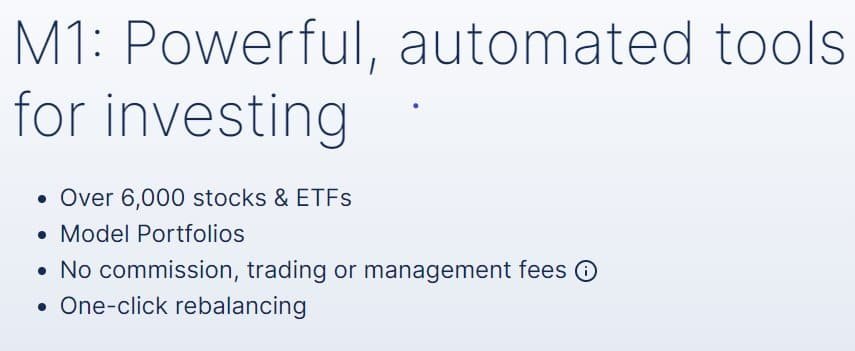
Robo-Advisor vs. Target Date Fund: A Comprehensive Guide
Do you want a set-it-and-forget-it investment strategy?
Are you seeking the greatest return for your risk level?
If you’re saving for a future goal, such as retirement or paying for college a decade in the future, you want a sensible investment strategy that will deliver the funds, when you need them.
This article may contain affiliate links which means that – at zero cost to you – I might earn a commission if you sign up or buy through the affiliate link.
Choosing the right investment strategy can feel like navigating a tumultuous sea. Two popular options for both newbies and experienced investors are robo-advisors and target-date funds. Both simplify investing, they have distinct similarities, differences, pros and cons. Despite managing the majority of my own investments, I use a robo-advisor for one of my retirement accounts. Understanding the nuances of robo-advisors vs target date funds, including personalization, diversification and fees, is crucial to making an informed decision that aligns with your financial goals and risk comfort level.
This comprehensive guide delves into the intricacies of robo-advisors and target-date funds, highlighting key features, advantages, disadvantages, and ultimately helping you determine which path might be the better fit for your investment goals.
Understanding the Basics: Robo-Advisors
Robo-advisors are digital platforms that provide automated investment management services. They utilize sophisticated algorithms and modern portfolio theory to build and manage investment portfolios based on your financial goals, risk tolerance, and time horizon. Within the robo-advisor category, there are many distinctions with some robo’s providing financial advisors and others offering advanced customization options. Fees range from zero on up to more than 0.70% of assets under management.
How Robo-Advisors Work:
Most robo-advisors have a similar set up.
- Onboarding and Profiling: You typically start by answering a questionnaire about your financial situation, investment goals (e.g., retirement, down payment, general wealth building), time horizon (how long you plan to invest), and risk tolerance (your comfort level with potential market fluctuations).
- Portfolio Construction: Based on your responses, the robo-advisor constructs a diversified portfolio, generally comprised of low-cost exchange-traded funds (ETFs) that invest in a mix of stocks and bonds. The specific asset allocation (the percentage of your portfolio allocated to different asset classes) is tailored to your risk profile. For instance, a younger investor with a long time horizon and higher risk tolerance might have a portfolio with a greater stock allocation, which historically offers higher growth potential but also carries greater price volatility. Conversely, an older investor nearing retirement might prefer a more conservative portfolio with a greater allocation to bonds, which tend to be less volatile.
- Automated Management: Once your portfolio is set up, the robo-advisor takes over the day-to-day management. This includes:
- Rebalancing: Over time, your initial asset allocation can drift due to the different performance of the underlying investments. Robo-advisors automatically rebalance your portfolio to bring it back in line with your target allocation, ensuring your risk profile remains consistent. For example, if stocks have performed exceptionally well and now make up a larger percentage of your portfolio, the robo-advisor might sell some stocks and buy more bonds to restore the desired balance.
- Tax-Loss Harvesting (Often Included): Some robo-advisors offer tax-loss harvesting, which involves selling losing investments to offset capital gains taxes, potentially improving your after-tax returns.
- Dividend Reinvestment: Dividends earned from your investments are automatically reinvested to purchase more shares, allowing your investments to compound over time.
- Automated Management: Once your portfolio is set up, the robo-advisor takes over the day-to-day management. This includes:
Advantages of Robo-Advisors:
- Low Costs: Robo-advisors generally have lower management fees than traditional human financial advisors, making them an accessible option for investors of all levels.
- Access to financial advisors: Empower, Schwab Intelligent Portfolios Premium, Fidelity Go, SoFi Invest and more all offer robo advisors with access to financial advisors. This results in lower fees than most traditional financial advisors.
- Accessibility: They offer a low barrier to entry, often with minimal or no account minimums, allowing individuals with smaller amounts to invest.
- Diversification: They automatically build diversified portfolios, reducing the risk associated with investing in individual stocks or a small number of assets.
- Convenience and Automation: The entire process, from portfolio creation to ongoing management, is automated and saves time and effort.
- Personalization (to a degree): While automated, the initial portfolio construction is based on your profile, offering a degree of personalization. Some robo advisors, like Wealthfront offer many options to personalize your robo-advisor portfolio.

Disadvantages of Robo-Advisors:
- Limited Human Interaction: You might not have a dedicated human advisor to discuss your specific financial situation or provide personalized advice beyond the algorithm’s framework.
- Less Flexibility: While you can often adjust your risk profile, the investment options within the platform are usually limited to the ETFs offered by the robo-advisor. In most cases, you can’t choose your preferred ETFs.
- Potential for Generic Advice: The advice may not account for complex or unique financial circumstances.
Understanding the Basics: Target Date Funds
Target-date funds (TDFs) are a type of mutual fund designed to simplify retirement investing. They have a specific “target date” in their name, which is the approximate year you plan to retire or begin withdrawals of the funds.
How Target Date Funds Work:
- Glide Path: The core concept of a TDF is its “glide path.” This refers to the gradual and automatic shift in the fund’s asset allocation over time. When the target date is far in the future, the fund typically holds a higher percentage of riskier assets like stocks, aiming for maximum growth potential over the long term.
- Automatic Rebalancing: As the target date approaches, the fund automatically and progressively shifts its asset allocation to become more conservative, gradually increasing the allocation to less volatile assets like bonds and cash. This helps to preserve capital as you near retirement and reduce the risk of significant losses.
- “Set It and Forget It” Approach: The primary appeal of TDFs is their simplicity. You choose a fund with a target date closest to your expected retirement year and generally don’t need to make any further adjustments. The fund manager handles the asset allocation and rebalancing for you.
Advantages of Target-Date Funds:
- Extreme Simplicity: They offer a truly “set it and forget it” approach to retirement investing.
- Automatic Diversification: Like robo-advisors, TDFs invest in a diversified mix of underlying funds.
- Automatic Rebalancing: The glide path inherently includes automatic rebalancing, shifting the asset allocation appropriately over time.
- Convenience within Retirement Accounts: They are often a default option in 401(k) and other retirement savings plans.
Disadvantages of Target-Date Funds:
- Lack of Personalization: The glide path is based on a general timeline and doesn’t consider your risk tolerance, other investments, or specific financial circumstances. Many TDFs have overly aggressive asset allocations.
- Underlying Fund Fees: You’ll pay the expense ratios of the TDF itself, and the expense ratios of the underlying funds it invests in. This might lead to higher overall fees compared with some low-cost robo-advisors.
- “One-Size-Fits-All” Approach: The pre-determined asset allocation may not be optimal for everyone, particularly those with unique risk profiles or investment goals beyond retirement.
- Limited Control: You have little to no control over the specific asset allocation or the underlying investments within the fund.
Robo-Advisor vs. Target Date Fund Comparison
| Feature | Robo-Advisor | Target Date Fund |
|---|---|---|
| Personalization | Tailored to individual risk profile and goals | Based on a general retirement timeline |
| Control | More flexibility in adjusting risk profile | Limited to no control over asset allocation |
| Scope | Can be used for various investment goals | Primarily designed for retirement savings or long-term goals |
| Human Interaction | Depends upon the robo-advisor | No direct advisor interaction |
| Fees | Generally lower management fees | Can have layered fees (fund of funds) |
| Tax Efficiency | May offer tax-loss harvesting | Generally less focused on tax optimization. Within a retirement fund, taxes aren’t a concern until redemption. |
| Management | Algorithm-driven with automated features and human oversight | Professionally managed with a glide path |
Which Investment Path is Right for You?
The best choice between a robo-advisor and a target-date fund depends on your preferences and financial situation.
Consider a Robo-Advisor if:
- You’re seeking low-fee investment management.
- You want a diversified investment portfolio based on your goals and risk tolerance.
- You are comfortable with a digital platform or lower levels of human guidance.
- You’re looking for tax-loss harvesting.
- You have short, medium and long term investment goals.
- You want the opportunity to adjust your risk profile over time.
Consider a Target Date Fund if:
- You are primarily focused on saving for retirement and want a simple, hands-off approach.
- You prefer the “set it and forget it” approach.
- It’s the default option in your employer-sponsored retirement plan.
- You don’t need for a highly personalized investment strategy.
Consider a Hybrid- Target Date Fund and Robo-Advisor Approach if:
It’s also possible to utilize both options. For instance, you might use a target-date fund within your 401(k) for retirement savings while using a robo-advisor for other investment goals like saving for a down payment or general wealth accumulation.
Making the Final Decision
Ultimately, the decision between a robo-advisor and a target-date fund is a personal one. Carefully weigh the pros and cons of each option with your financial circumstances, investment knowledge and comfort level. Understanding the nuances of each can empower you to make a confident choice that sets you on the right path toward achieving your financial aspirations. Remember to regularly review your investment strategy, regardless of whether you choose a TDF or a robo-advisor, to ensure it continues to align with your evolving goals.

FAQ – Robo Advisor vs Target Date Fund
Index funds are mutual or exchange traded funds which hold the same investments as a popular stock or bond market index. For example, the S&P 500 index is an unmanaged group of the 500 most popular U.S. stocks. You can buy an S&P 500 index fund from various companies such as Blackrock and Vanguard.
The majority of robo-advisors own several index funds, that span U.S. and international stock and bond markets.
When comparing index funds vs robo advisors, you might think about whether you would like to buy index funds on your own, or accept the index funds which are selected within a robo advisor. If you choose a robo-advisor you’re likely to have a professionally balanced and diversified investment portfolio.
Although, depending upon the robo-advisor’s fees, it could be more economical to buy index funds on your own. Fee-free and low cost robo advisors include Schwab Intelligent Portfolios and Fidelity Go.
Most robo advisors own several index funds from various market segments, such as U.S. equities, international equities and bonds. The funds’ performance mirrors the returns of those of the underlying indexes.
For example if your 20% of your robo advisor account is invested in an international market index fund, then 20% of the returns of your robo-advisor will reflect the returns of the international stock market index and so on, for the other market segments.
Most robo-advisor returns mirror those of their underlying funds. So, robo-advisors don’t beat the market, they usually match the market returns, in the percentages that are invested in various types of index fund investments. Although, the robo-advisory fees will cut into the robo-advisors returns, by a small margin.
Robo advisor returns depend on which robo advisor you invest in and the percentages invested in various asset classes. If a robo-advisor invests 33% in the U.S. stock market, 33% in the international stock market and 34% in the bond market, then the returns will coincide with those of their specific market indexes, in the same percentages.
Various robo-advisors will top the return charts at different times. The robos returns usually correspond with which market segments are in favor, at a particular time and which robo advisors asset allocations are aligned with the current winning market segments..

Related
- Robo Advisor Pros And Cons: The Definitive Answer
- Should I Invest In A Target Date Retirement Fund?
- Target Date Funds: Pros and Cons
- Pros And Cons Of M1 Finance
- Do I Need A Financial Advisor: A Comprehensive Guide?
Disclosure: Please note that this article may contain affiliate links which means that – at zero cost to you – I might earn a commission if you sign up or buy through the affiliate link. That said, I never recommend anything I don’t believe is valuable.
M1 Disclosure: This content is not a solicitation, is not endorsed by M1, and was not reviewed by M1; the opinions expressed are solely those of the authors and do not reflect M1’s views. Information presented is accurate as of the video posting date; for the most up-to-date information, please refer to m1.com. Before making any investment decisions, consult your personal investment, legal, and tax advisors, as this content is for informational purposes only and not intended as investment recommendations.
M1 Disclosure: I have a funded account with M1.
The post Robo-Advisor VS Target Date Fund – Which Investment Strategy Is Right For You? appeared first on Barbara Friedberg.


